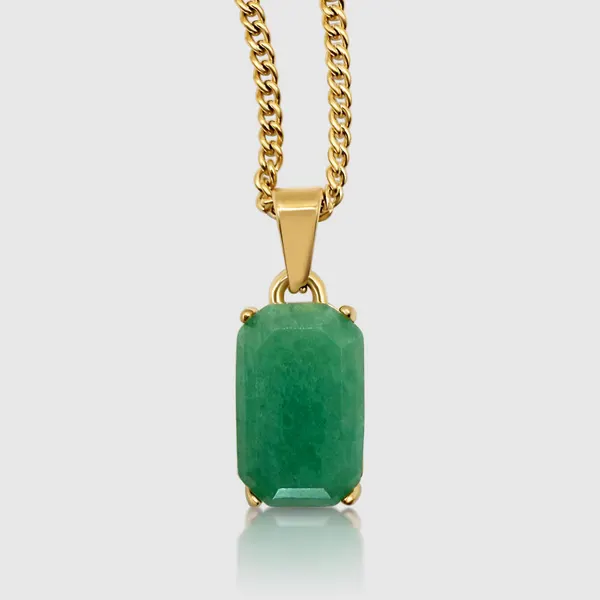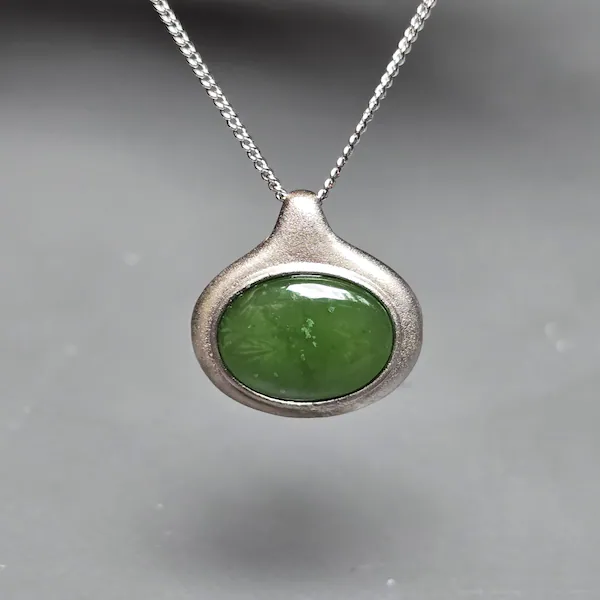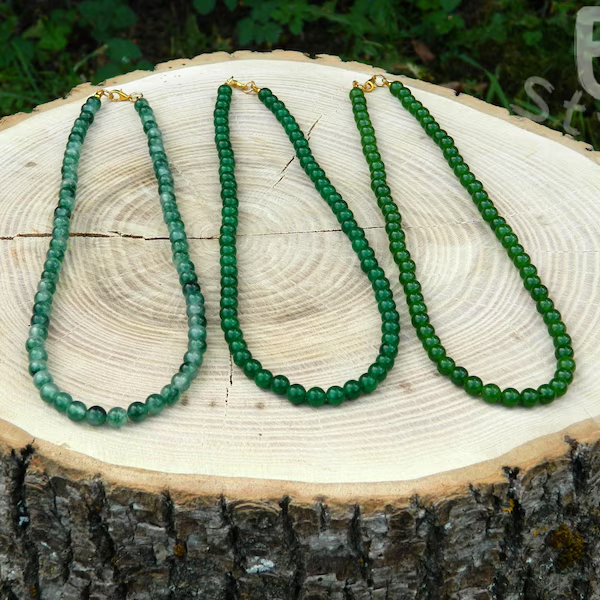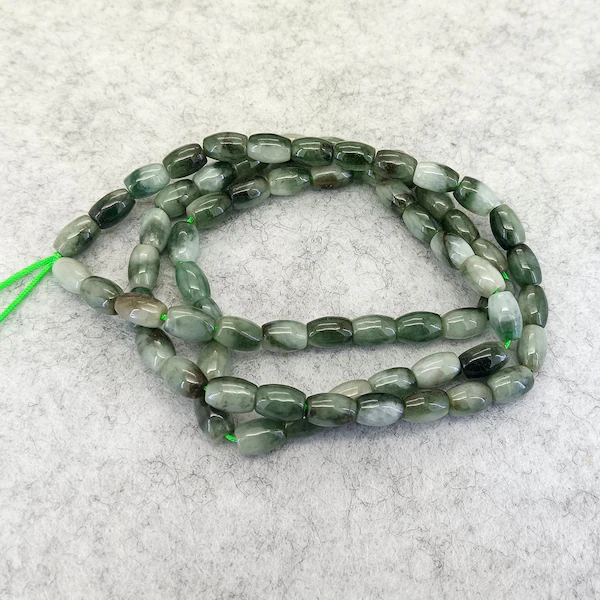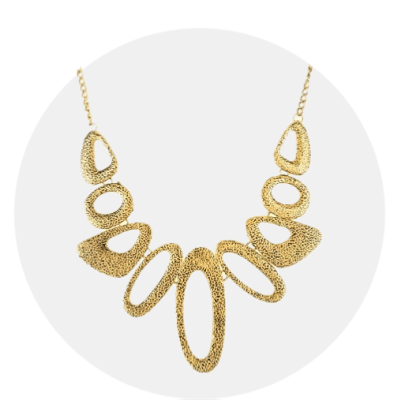Understanding A Grade Jade
A Grade Jade, often referred to as “natural jade,” represents the highest quality of jade available in the market. This grade is 100% natural and untreated, retaining its original beauty as it is mined from the earth. A Grade Jade is prized for its purity, texture, color, and durability, making it the most sought-after option for collectors, jewelers, and connoisseurs.
Key Characteristics of A Grade Jade
100% Natural and Untreated
A Grade Jade is free from chemical treatments, bleaching, dyeing, or polymer impregnation. Its natural composition ensures that the stone’s intrinsic value remains intact. Unlike lower grades, it is completely authentic, offering a genuine connection to nature.
Vibrant and Even Color
The color of A Grade Jade is rich, vivid, and uniform. It can range from the most coveted emerald green to lavender, white, yellow, or even black. The saturation of color is deep and consistent, with minimal spotting or streaking, which is a hallmark of high-quality jade.
Smooth and Lustrous Texture
One of the defining features of A Grade Jade is its silky, smooth texture. When polished, it exhibits a natural, almost waxy luster that enhances its aesthetic appeal. The stone feels cool and solid to touch, a tactile confirmation of its authenticity.
High Transparency and Clarity
While jade is generally opaque to semi-transparent, A Grade Jade can possess a beautiful translucency, especially under light. This allows the color to appear more vivid and gives depth to the stone, creating an inner glow that adds to its luxurious appeal.
Durability and Hardness
A Grade Jade is extremely durable, making it suitable for both jewelry and carvings. Its toughness ensures that it can withstand everyday wear without easily chipping or breaking, a quality that lower-grade jades often lack.
Value and Investment Potential
Because it is completely natural and untreated, A Grade Jade retains and often increases in value over time. Collectors and investors seek A Grade Jade not only for its beauty but also for its rarity and long-term worth.
Applications of A Grade Jade
Jewelry: Rings, bracelets, necklaces, pendants, and earrings crafted from A Grade Jade are highly prized for their vibrant color and authenticity.
Carvings and Sculptures: Artists prefer A Grade Jade for intricate carvings because of its smooth texture and durability.
Collectibles: As a rare gemstone, A Grade Jade is a valuable addition to private collections and exhibitions.
Understanding B Grade Jade
B Grade Jade refers to jade that has undergone chemical treatments to enhance its appearance, typically to make it look like higher-quality A Grade Jade. While it can be visually attractive, B Grade Jade is less valuable, less durable, and lacks the natural purity of A Grade Jade. It is primarily treated to improve color and transparency, which can be appealing to buyers but comes at the cost of authenticity and longevity.
Key Characteristics of B Grade Jade
Chemically Treated
B Grade Jade is often subjected to bleaching, acid treatment, and polymer impregnation to remove impurities and enhance its appearance. These processes can improve the stone’s translucency and color but also make it more fragile and less durable than natural jade. Unlike A Grade Jade, B Grade jade is not entirely natural, which significantly affects its long-term value.
Enhanced Color, Sometimes Artificial
The color of B Grade Jade is typically more uniform and vibrant than untreated jade, achieved through dyeing or chemical treatment. However, the enhanced color may not be stable over time. Exposure to sunlight, heat, or chemicals can cause fading or discoloration, making it less reliable as a long-term investment.
Texture and Luster Differences
While B Grade Jade may appear smooth and glossy, its luster is often superficial because of polymer impregnation. The natural “waxy” feel of genuine jade is usually diminished, and the surface may be softer and more prone to scratches or damage compared to A Grade Jade.
Lower Durability
Chemical treatments used in B Grade Jade can weaken its internal structure. As a result, it is more brittle and susceptible to cracking or chipping, especially during carving or prolonged wear in jewelry. This makes it less suitable for intricate carvings or heavy daily use.
Value Considerations
B Grade Jade is less expensive than A Grade because it is treated and not fully natural. While it may provide a visually appealing alternative for those seeking affordability, it lacks the rarity, authenticity, and investment potential of A Grade Jade. Its value is primarily aesthetic rather than intrinsic.
Maintenance and Care
B Grade Jade requires more careful handling. Harsh chemicals, prolonged sunlight, and extreme temperatures can damage the stone or cause discoloration. Owners must take precautions to preserve its appearance, unlike A Grade Jade, which is naturally resilient.
Applications of B Grade Jade
Affordable Jewelry: B Grade Jade is popular for jewelry pieces aimed at a lower price range, offering the look of high-quality jade at a fraction of the cost.
Decorative Items: It is often used in carvings, ornaments, and small sculptures where visual appeal is more important than authenticity.
Learning or Practice Pieces: Jewelry makers and carvers sometimes use B Grade Jade to practice intricate designs without risking expensive A Grade material.
Is A Grade jade more valuable than B Grade jade?
Yes. A Grade jade is rarer, natural, and untreated, making it highly prized by collectors and jewelry enthusiasts. B Grade jade is less expensive due to chemical enhancement.



